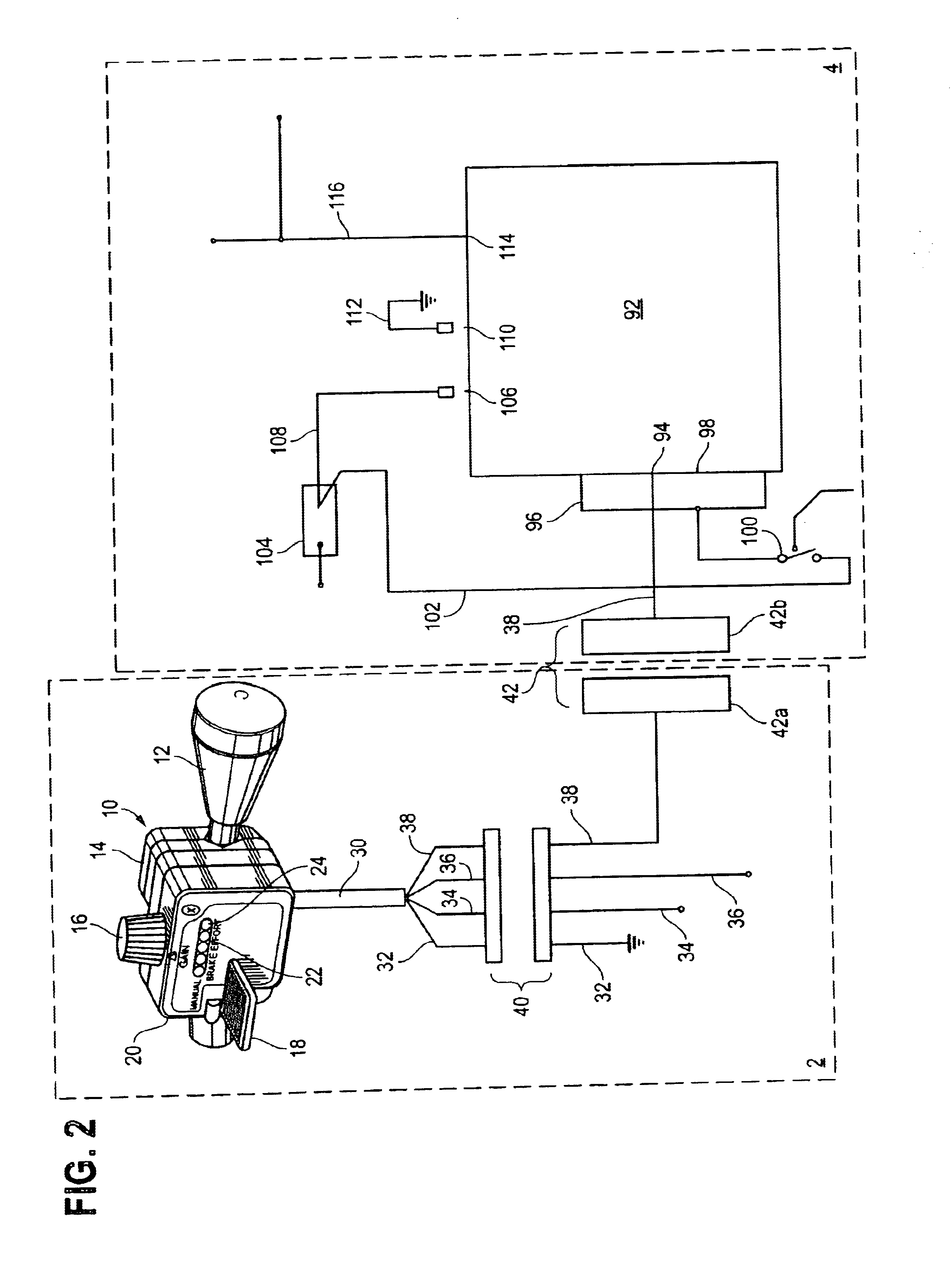Towed vehicle brake controller
a technology for brake controllers and towed vehicles, which is applied in the field of new towed vehicle brake controllers, can solve the problems of inability to accurately determine the braking condition of the prior art, inability to accurately detect the braking situation, and inability to provide control of this type of system
- Summary
- Abstract
- Description
- Claims
- Application Information
AI Technical Summary
Benefits of technology
Problems solved by technology
Method used
Image
Examples
Embodiment Construction
Referring to the drawings, FIG. 1 shows a wired remote control module 10 constructed in accordance with the principles of the present invention and illustrates a control module 10 of a system in which a towing vehicle is towing an automobile having an independent braking system. For clarity in FIG. 1, those parts of the present invention which in a preferred embodiment are housed in the towing vehicle are shown in box 2 and those part of the present invention that are housed in the towed vehicle are shown in box 4.
Control module 10 is shown attached to a gear shift lever 12 of a towing vehicle. It is to be understood, however, that control module 10 may be attached to any convenient location within the passenger compartment of the towing vehicle, such as on the vehicle's dashboard. Control module 10 comprises a housing 14, gain control knob 16, a manual control lever 18, and a lighted display panel 20. Lighted display panel 20 may include brake force light emitting diodes (LEDs) dis...
PUM
 Login to View More
Login to View More Abstract
Description
Claims
Application Information
 Login to View More
Login to View More - R&D
- Intellectual Property
- Life Sciences
- Materials
- Tech Scout
- Unparalleled Data Quality
- Higher Quality Content
- 60% Fewer Hallucinations
Browse by: Latest US Patents, China's latest patents, Technical Efficacy Thesaurus, Application Domain, Technology Topic, Popular Technical Reports.
© 2025 PatSnap. All rights reserved.Legal|Privacy policy|Modern Slavery Act Transparency Statement|Sitemap|About US| Contact US: help@patsnap.com



